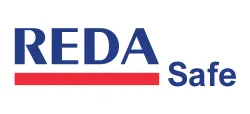Safe Start-Up Procedures: Clear Communication Is Essential

Key Takeaway
Clear start-up procedures can reduce expensive and hazardous incidents.
Introduction
When it comes to operating machinery safely, clear and straightforward start-up procedures are a must. But how do we make sure these guidelines are easy to understand and follow? In this blog post, we’re taking advice from the pros to break down the process into manageable steps. From gathering insights from experienced operators to ensuring everyone on the team is trained, we’ll show you how to keep your operations running smoothly and safely. Whether you’re overseeing a busy factory floor or managing a small workshop, you’ll find practical tips to improve safety and efficiency at every level. Let’s dive in and make safety a priority together, ensuring everyone goes home safe at the end of the day.
The Importance of Well-Defined Startup Protocols
Let's delve into a real-world incident that highlights the critical need for explicit startup protocols, as documented by the Bureau of Safety and Environmental Enforcements (BSEE).
Back in January 2019, an incident involving a fire outbreak on a production platform led to significant damage, particularly affecting a glycol reboiler unit and a compressor building.
This unfortunate event unfolded after the platform had been inactive for a while. When the time came to bring it back online, the overseeing field foreman initiated the reboiler at a setting of 200°F. The process escalated as the temperature was increased to 250°F, but crucially, the reboiler fluid wasn't circulated as required.
During this critical phase, the foreman had to divert his attention to manage a compressor shutdown along with other responsibilities, leaving the glycol reboiler without supervision. It took less than an hour and a half for a mechanic to notice a significant flame emanating from the reboiler's vicinity.
Upon review, BSEE pinpointed a gap in the operator’s startup guidelines. There was an absence of clear instructions regarding the appropriate rate for temperature escalation following a period of inactivity. Additionally, there was no emphasis on the necessity of continuous monitoring during the reboiler's activation phase.
This case study serves as a potent reminder of how explicit and diligently applied startup procedures can significantly mitigate the risk of such dangerous and costly incidents. Ensuring that startup protocols are not only well-documented but also meticulously followed is paramount in safeguarding against unforeseen hazards in the workplace.
Unlocking the Potential of Checklists for Enhanced Safety
Chet Brandon from LeadingEHS.com brought to light the pivotal role that checklists have played in aviation safety, stemming from a lesson learned the hard way with the 1935 prototype B-17 crash. This incident underscored the vital need for structured procedures in managing complex systems.
The investigation into this crash revealed a critical detail: the aircraft's elevator control was not positioned correctly, which would have prevented the pilots from taking their seats unless corrected. This mishap led to a revolutionary change in aviation: the implementation of comprehensive checklists for various stages of flight—takeoff, in-flight, pre-landing, and post-landing procedures.
This seemingly straightforward solution—checklists—has dramatically improved safety and operational efficiency, a practice that, while previously existing in some form, became standardized across the aviation industry due to this event.
The principles of meticulous procedure and checklist adherence have since transcended aviation, finding their place in space exploration, particularly noted during the Apollo missions. This evolution showcases the timeless value of well-constructed checklists in ensuring safety and preventing oversight.
In the context of industrial safety and start-up procedures, the lesson is clear: adopting robust checklists can significantly reduce risks. To further enhance compliance and ensure these crucial steps are not overlooked, employing durable signs, labels, and tags is an effective strategy. These should be crafted to endure harsh conditions, ensuring that safety protocols are visibly and consistently communicated across all operational environments. This approach not only reinforces safety practices but also supports a culture of accountability and precision in all aspects of operation.
Streamlining Startup Success Through Clear Steps
Ian Sutton lays out a straightforward path to crafting and implementing procedures that guarantee smooth operations:
- Consult with the Experts: Begin by talking to a seasoned mechanic or operator. Get them to walk you through the process of starting up the machine.
- Document the Process: Take detailed notes of the explanation for future reference.
- Seek Peer Review: Have the procedure checked by others for technical accuracy, ensuring no step is missed.
- Standardize the Format: Arrange the instructions to align with your company's formatting guidelines, making them easy to follow.
- Official Approval: Get the final nod from the necessary authority within your organization.
- Distribute: Make sure the procedure is accessible to all relevant team members.
- Educational Training: Conduct thorough training sessions for everyone involved, ensuring they understand each step.
To maintain vigilance and adherence to these procedures, consider making surprise visits during routine startups and shutdowns. This practice helps verify that the procedures are being executed as designed.
Encountering lapses in procedure adherence? It's crucial to communicate the significance of these protocols again, emphasizing clarity above all. A clear, well-understood procedure is the backbone of safe and efficient operations, helping avoid mishaps and ensuring a seamless workflow.
Conclusion
As we wrap up, remember that the key to maintaining a safe working environment lies in clear, simple, and effective communication. By following the straightforward steps outlined—from consulting with experienced team members to ensure procedures are technically sound and widely understood, to conducting surprise checks—we can significantly reduce risks. It's all about making safety practices accessible and actionable for everyone involved. Let's commit to continuous improvement and vigilance in our safety procedures, reinforcing the importance of each step and ensuring that our teams are well-trained and prepared. Together, we can create a culture of safety that protects our most valuable asset: our people.
